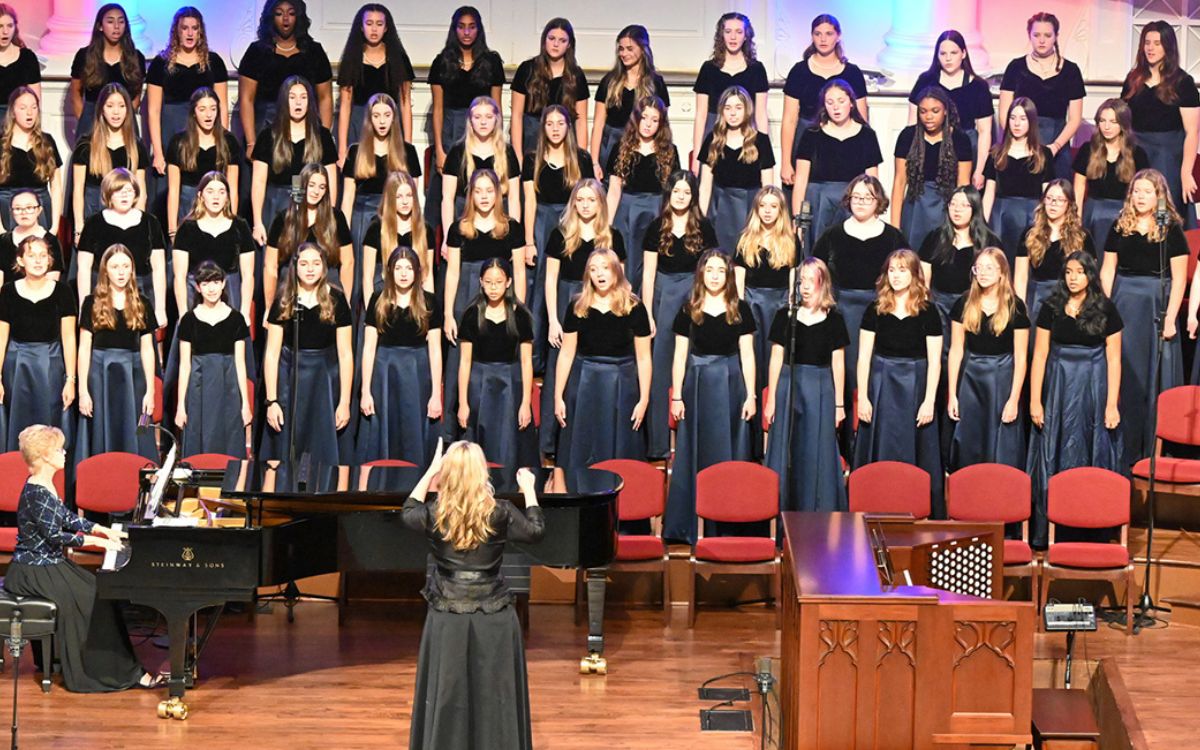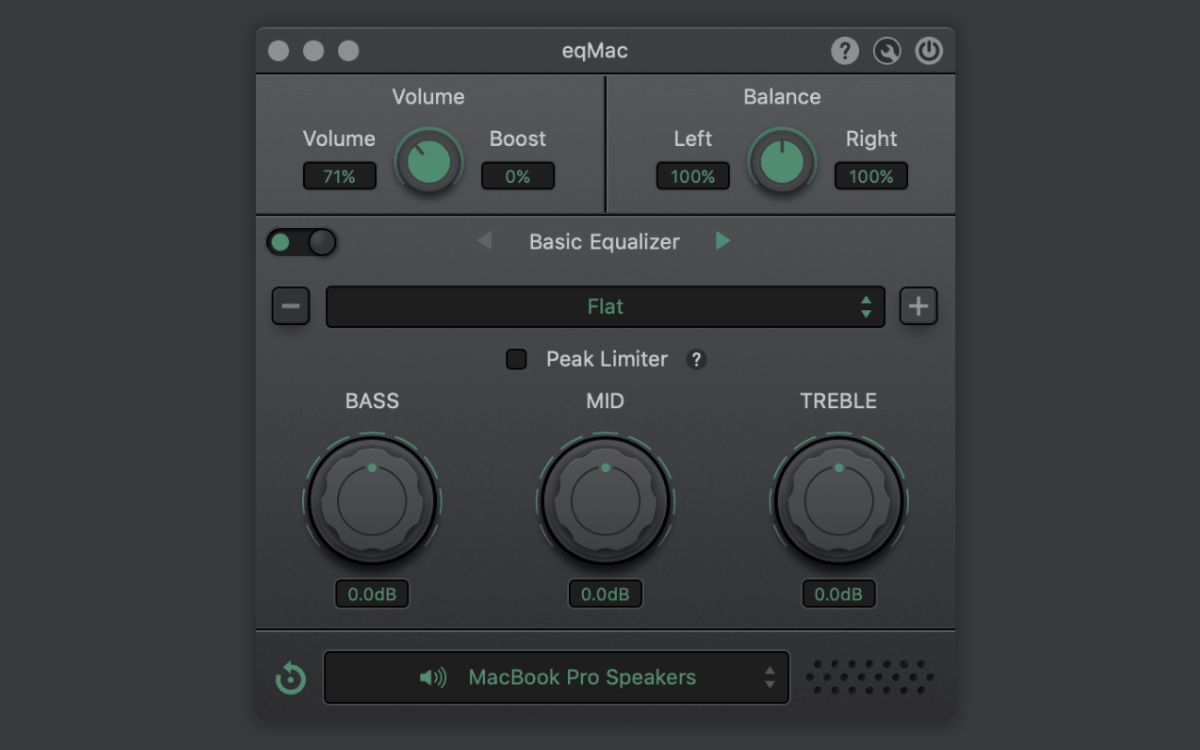Home>Production & Technology>Treble>What Is A Treble Voice


Treble
What Is A Treble Voice
Modified: January 22, 2024
Discover what a treble voice is and learn how it differs from other vocal ranges. Explore the characteristics and techniques unique to treble singing.
(Many of the links in this article redirect to a specific reviewed product. Your purchase of these products through affiliate links helps to generate commission for AudioLover.com, at no extra cost. Learn more)
Table of Contents
Introduction
Welcome to the world of treble voices! In the realm of music, voices come in a variety of ranges, each with its own distinct sound and capabilities. One such range is the treble voice, which is characterized by its clarity, brightness, and youthful tone. Whether it’s in a choir, opera, or solo performance, treble voices have the ability to captivate listeners and add a touch of innocence and purity to any piece of music.
In this article, we will delve into the fascinating realm of treble voices. We will explore the definition of treble voices, discuss their unique characteristics, uncover the training required to develop and maintain a treble voice, highlight some famous treble voices throughout history, and conclude with the enduring impact these voices have on the world of music.
So, whether you have a treble voice yourself, are a fan of treble voices, or are simply curious to learn more about this enchanting vocal range, read on as we embark on this melodic journey together.
Definition of Treble Voice
The treble voice, also known as the soprano voice, is the highest vocal range in the traditional classification of voices. It refers to the ability to sing in the highest register, typically above the mezzo-soprano and alto ranges. Treble voices are most commonly found among female singers, though there are also male singers known for their treble voices, especially during adolescence.
What sets the treble voice apart is its ability to reach the highest pitches with clarity and precision. It has a distinctive brightness, often described as angelic or ethereal, that can soar above other voices and instruments in an ensemble. Treble voices possess a captivating purity and a delicacy that add a unique charm to any musical composition.
In choral settings, the treble voice is often assigned to sing the melody or the higher harmonies. Its soaring sound can create a sense of beauty and awe, bringing a touch of innocence and youthfulness to the music. Treble voices are also commonly featured in operas, musicals, and solo performances.
It’s important to note that the treble voice can vary in strength and range depending on the individual. Some treble singers may have a lighter, more agile voice, while others may have a fuller, more powerful sound. Additionally, the range of a treble voice can extend from around the A below middle C up to the C or D two octaves above middle C, although this can vary depending on the individual’s vocal training and ability.
Overall, the treble voice is a truly remarkable instrument, capable of reaching breathtaking heights and evoking emotions through its radiant and captivating sound.
Characteristics of Treble Voice
The treble voice possesses several unique characteristics that distinguish it from other vocal ranges. These qualities contribute to the enchanting and captivating nature of treble voices. Let’s explore some of the key characteristics that define the treble voice:
- Brightness: One of the defining traits of the treble voice is its bright and shimmering tone. Treble voices have a natural brilliance that cuts through the musical texture, adding a touch of radiance to any performance.
- Clarity: Treble voices have the ability to produce clear and pure notes, even in the higher register. Their clarity of tone allows them to be heard distinctly and effortlessly, making them ideal for carrying melodic lines.
- Youthful Tone: The treble voice is often associated with youthfulness and innocence. The youthful quality of treble voices brings a sense of freshness and purity to the music, evoking emotions and invoking a sense of nostalgia.
- Flexibility: Treble voices possess a remarkable flexibility, allowing singers to navigate through various vocal techniques and embellishments. This adaptability enables treble singers to tackle challenging musical passages and perform with agility and precision.
- Extended Range: The treble voice has the potential to reach impressive high notes and soar above other voices. It can span a wide range, encompassing both lower and higher pitches, providing a dynamic and expressive vocal range for treble singers.
- Expressiveness: Treble voices have the ability to convey a wide range of emotions. From delicate and tender to powerful and dramatic, treble singers can bring depth and emotion to their performances, capturing the hearts of listeners.
When these characteristics are harnessed and honed through proper training and technique, treble voices have the power to leave a lasting impression and create truly breathtaking musical moments.
Training for Treble Voice
Developing and maintaining a treble voice requires dedicated training and vocal technique. Whether you are a beginner starting your musical journey or an experienced singer looking to refine your skills, here are some key aspects of training for a treble voice:
Vocal Exercises: Regular vocal exercises are essential for building the strength, range, and flexibility of the treble voice. These exercises may include scales, arpeggios, and vocal warm-ups that target different areas of the vocal range, helping to improve pitch accuracy, breath control, and vocal agility.
Proper Breath Support: Breath support is crucial for producing a consistent and controlled tone. Treble singers should focus on diaphragmatic breathing techniques, ensuring that the breath is well-supported from the lower abdomen. This allows for greater vocal control and sustains the clarity and power of the treble voice.
Posture and Vocal Alignment: Maintaining good posture and vocal alignment is key to optimal vocal production. Treble singers should strive for a relaxed and upright posture, with the chest lifted and the shoulders relaxed. This alignment promotes proper airflow and resonance, enabling the treble voice to project with clarity and resonate freely.
Articulation and Diction: Clear articulation and diction are essential for effective communication in singing. Treble singers should pay attention to enunciating consonant sounds and shaping vowel sounds to create a well-defined and intelligible vocal delivery. This ensures that the audience can understand the lyrics and appreciate the nuances of the treble voice.
Musical Interpretation: Treble singers should develop their musical interpretation skills to bring life and emotion to their performances. This involves understanding the lyrics, interpreting the emotions conveyed in the music, and employing vocal dynamics and phrasing to express the intended messages of the song.
Vocal Health: Taking care of one’s vocal health is crucial for a treble singer. This includes staying hydrated, avoiding strain or overuse of the voice, warming up and cooling down before and after performances, and seeking professional guidance if experiencing vocal issues or discomfort.
It’s important to note that training for a treble voice is a gradual process that requires patience, consistent practice, and guidance from a qualified vocal instructor. With dedication and perseverance, treble singers can unlock the full potential of their voices and achieve a refined and captivating vocal performance.
Famous Treble Voices
Throughout history, there have been remarkable treble voices that have left an indelible mark in the world of music. From opera to pop, these individuals have showcased the beauty and power of the treble voice. Here are some of the most famous treble voices:
- Julie Andrews: Known for her iconic roles in films such as “Mary Poppins” and “The Sound of Music,” Julie Andrews began her career as a treble singer. Her crystal-clear voice and exceptional range captivated audiences and earned her numerous accolades throughout her career.
- Charlotte Church: Hailing from Wales, Charlotte Church rose to prominence as a treble singer in the late 1990s. With her angelic voice and expressive performances, she became a household name and achieved chart-topping success with albums such as “Voice of an Angel” and “Dream a Dream.”
- Aled Jones: Aled Jones gained international recognition as a young treble singer with his rendition of “Walking in the Air” from the animated film “The Snowman.” His pure and angelic voice touched the hearts of millions, and he continues to enchant audiences as a tenor today.
- Jackie Evancho: Jackie Evancho gained fame as a treble singer after her appearance on “America’s Got Talent” in 2010. Her heavenly voice and mature sound at such a young age left audiences in awe, leading to a successful career in both classical crossover and popular music.
- Peter Hollens: While primarily known for his impactful YouTube presence as an a cappella singer, Peter Hollens started his musical journey as a treble voice. His versatility and ability to arrange and perform complex vocal harmonies have made him a prominent figure in the contemporary a cappella world.
These are just a few examples of the many talented treble voices that have graced the stage and touched the hearts of audiences around the world. Each of them has brought their unique style and interpretation to the treble voice, creating unforgettable musical moments that continue to inspire and resonate with listeners.
Conclusion
The treble voice is a truly extraordinary vocal range that possesses a distinct and captivating charm. Its brightness, clarity, and youthful tone create a mesmerizing sound that can uplift and enchant audiences. From soaring melodies to delicate nuances, the treble voice has the ability to evoke emotions and leave a lasting impact on listeners.
Training for a treble voice requires discipline, dedication, and proper vocal technique. Vocal exercises, breath support, posture, and musical interpretation are all essential components of nurturing and honing the treble voice’s unique qualities. With consistent practice and guidance, treble singers can develop the strength, flexibility, and expressiveness needed to maximize the potential of their voices.
Throughout history, we have witnessed the impact of famous treble voices like Julie Andrews, Charlotte Church, Aled Jones, Jackie Evancho, and Peter Hollens. These treble singers have left an indelible mark on the world of music, captivating audiences with their angelic voices and exceptional talent.
Whether in choral ensembles, opera houses, or pop stages, the treble voice continues to captivate and inspire. Its ability to convey innocence, purity, and emotion adds a special layer to musical performances. From the ethereal highs to the heartfelt moments, the treble voice holds a unique place in the realm of music.
So, whether you are a treble singer yourself, a fan of treble voices, or simply interested in exploring the beauty of this vocal range, take a moment to appreciate its brilliance. The treble voice is an enduring force in the world of music, leaving a lasting impression on those who have the privilege of experiencing its mesmerizing melodies.











